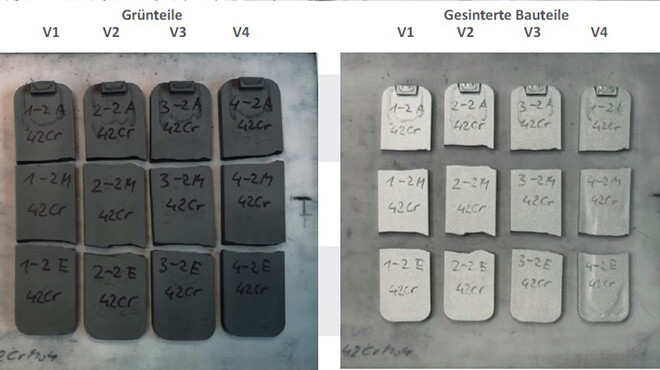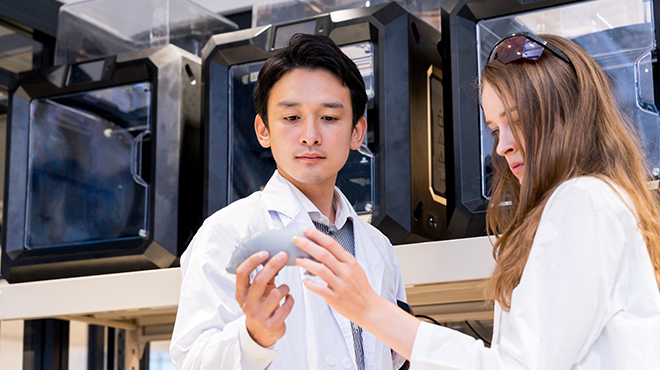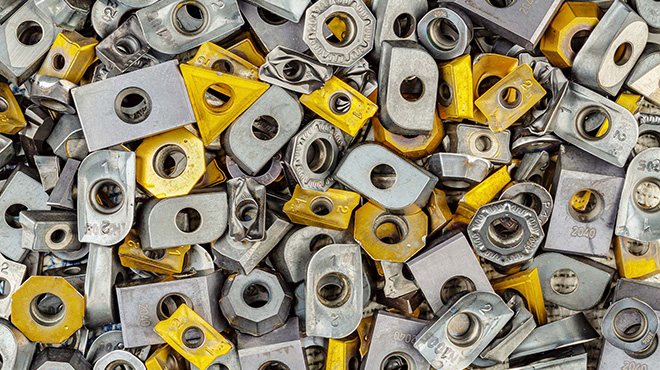Practical test for density measurement using the MIM method
What awaits you here: INTRODUCTION TEST SETUP AND IMPLEMENTATION RESULTS OF DENSITY MEASUREMENT OPTIMISATION OF PRODUCTION PARAMETERS CONCLUSION AND...

Archimedes‘ principle, often referred to as Archimedes’ law, is a fundamental physical law that plays a central role in the manufacturing industry. It enables the precise determination of the density of solids, which in turn ensures the quality and homogeneity of products. However, the Archimedean measuring method struggles with a negative image in terms of its handling and reliability. We have set ourselves the task of changing this. But first, a reminder...
Archimedes' principle states that a body in a liquid experiences a buoyant force that corresponds to the weight of the displaced medium.
By measuring the weight of a solid, first in air and then in a fluid medium, the density of the component can be determined. This works particularly well for geometrically simple components.
Let's take a closer look at the process of such a measurement according to Archimedes. Our journey begins in the production of components that are manufactured using a sintering process, powder injection moulding, additive manufacturing or another modern manufacturing process, for example. The aim is to measure the component using a density kit and a laboratory balance both in air and in distilled water (or another liquid) in order to quickly obtain valid density values during the production process. The density of the components is important in order to recognise possible undesirable developments in production and the resulting material defects. Especially for safety-critical components in industries such as aviation or medical technology, defective products can have serious consequences and are therefore unacceptable.
The measurement is carried out in the laboratory, as this is the only place that provides the necessary environment for the most accurate measurement possible. If carried out correctly, the measurement itself only takes a short time. The results obtained usually have to be documented manually.
Manual handling: The test object must be positioned manually on the measuring dish or in the container with liquid. The component should be positioned as consistently centred as possible, as off-centre positioning can cause deviations in the measured values. As you can see, this can lead to difficulties with components with complex geometries. In addition, care must be taken to ensure that no air bubbles cling to the component. Manual handling therefore poses the risk of falsifying the measurement results. The possible influences and errors are described below:
Influence of bubble formation on the component: Air pockets that adhere to the component can affect the measurement result in different ways. If air bubbles adhere to the component, they increase the apparent volume of the component in the liquid. This leads to a larger displaced volume of liquid and thus to a higher apparent buoyancy. This can result in the component appearing lighter than it actually is when immersed in the liquid. Air bubbles also have their own weight. Although this weight is minimal compared to the component, it can make a difference in precise measurements. The adhesion of bubbles can be irregular, resulting in uneven displacement of the liquid. This can affect the accuracy of the measurement, especially if the component has a complex shape.
Influence of human factors: Deviations in the handling of the component or an incorrectly performed measurement (application of dirt to the component, inaccurate consideration of environmental parameters, etc.) can also have effects that influence the accuracy of the results. While the water temperature is recorded, the air temperature is usually not taken into account. The reason is that the temperature of the air has a much smaller direct influence on the density of the solid or water compared to the water temperature. It is therefore often regarded as less critical for the measurement. Nevertheless, under special conditions it may be necessary to take the air temperature into account. This all leads to inaccurate density values, which are crucial for quality control.
Faulty quality control: In the manufacturing industry, inaccurate density measurement due to environmental influences can lead to faulty quality control, which in turn increases production costs and impairs product quality. In particular, vibrations caused by neighbouring production systems can lead to inaccurate results. Vibration decoupling is therefore absolutely essential.
Utilisation of laboratory staff
Unfortunately, even in this day and age, it is not a matter of course that laboratories always respond as quickly as possible. This can lead to delays of several days. Time in which the production of components is either at risk or at a standstill. The initiative for an automated density meter came from one of our customers with an overloaded laboratory. Sometimes it took up to a week for parts to return to production.
As you can see, the manual method unfortunately harbours the potential for errors caused by people and the environment. Density determination using the traditional method with a density kit and laboratory scales is therefore considered by many quality experts to be unreliable. Is this really justified?
So how can we ensure reliable Archimedean density determination in production? This is exactly where our engineers started.
The automation of density measurement according to Archimedes has made considerable progress in recent years. Here are some of the most important features and advantages of this new method:
As you can easily see, these advances not only modernise the Archimedean principle, but also optimise it. This allows it to meet the demands of today's manufacturing industry. It is clear that the future of density measurement lies in automation, and this new method is an impressive example of this. Archimedean density measurement lives on and doesn't have to be complicated.

What awaits you here: INTRODUCTION TEST SETUP AND IMPLEMENTATION RESULTS OF DENSITY MEASUREMENT OPTIMISATION OF PRODUCTION PARAMETERS CONCLUSION AND...

What awaits you here: INTRODUCTION MICROGRAPH COMPUTERTOMOGRAPHY (CT) AUTOMATED DENSITY DETERMINATION CONCLUSION Introduction In additive...

What awaits you here: A TRIP TO KOCHEL AM SEE BACKGROUND TO DENSITY MEASUREMENT IN POWDER MOULDING INFLUENCE ON MOULDING AND QUALITY CHALLENGES AND...